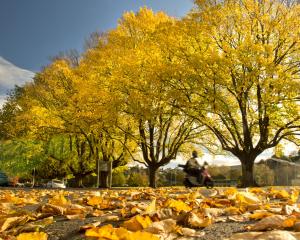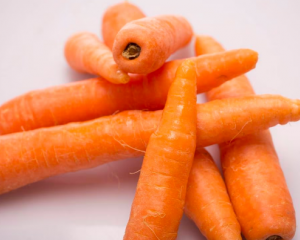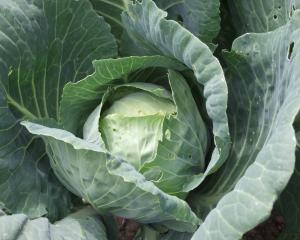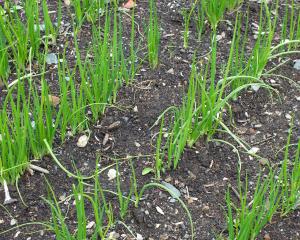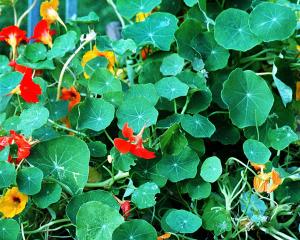Vegetables
Cabbage, cauliflower and silverbeet can still be planted to stand the winter. Ground from which potatoes have been lifted recently is ideal for these crops.
Sprinkle blood and bone (100g per sq m) on the soil and rain in May and June will wash it into the soil. Compost can also be spread on the ground where these hardy vegetables are to be grown.
Cauliflower heads can be damaged by rain and cold conditions as winter nears. Those maturing soon should be regularly checked and the outside leaves turned in on the centres, the curds, to help protect them and kept them white.
Celery sometimes shows leaf-spot at this time of the year and can be treated with a copper spray applied every 10 to 14 days.
Because they like cool, moist conditions, leeks usually will keep growing until June.
If soil is drawn up around the stems of brussels sprouts, cabbage, cauliflower and broccoli as they grow, it will not only aid drainage for the plants during the winter but also helps prevent them being blown over in strong winds.
Asparagus beds are worth the effort, as these perennial vegetables will produce crops for 20 years or more. Keep the bed free of weeds but leave the plants top growth until it yellows.
This is a good time to apply well-rotted manure or compost into which chopped seaweed has been added.
Flowers
Rose cuttings can be taken during the next few weeks with reasonable success. Some roses thrive only when budded on to a stock with a more vigorous root system, while others, particularly heritage varieties, grow readily from cuttings. Choose short side growths that have had a flower on them. Remove chosen pieces from the main stem, ideally with a heel of the older growth. Cut off the dead flower, remove all the leaves except the top two, and thoroughly soak a deep container of potting mix before inserting the cutting deeply.
Cuttings do best if placed in a shady place as cool temperatures increase the likelihood of roots forming. Cuttings that develop successfully into plants should be left until late autumn next year before planting in their permanent home.
Fruit
Autumn is the best time for planting soft fruits of the Rubus family (raspberries, blackberries, loganberries, marionberries, boysenberries and tayberries). Raspberries and blackberries have been eaten in Europe for at least 35,000 years, but the blackberry was not cultivated commercially until 1835. Introduced into New Zealand in the 19th century, it rapidly became one of the country’s worst weeds.
The loganberry, an American raspberry-blackberry cross, is named after its breeder, Judge J.H. Logan.
Boysenberries are also American and the raspberry-loganberry-Pacific blackberry hybrid is named after Rudolph Boysen, who bred it in the early 1920s, but it was Walter Knott (of Knotts Berry Farm) who made them famous. Tasman is a virtually thornless boysenberry variety.
The tayberry, developed in Scotland in 1962, is a loganberrylike blackberry-raspberry cross. The fruit is somewhat larger than a boysenberry and ripens a little earlier.
Waiau and Aspiring are popular red raspberry varieties, while two heritage raspberries, marketed as Ivory and Ebony, were commercially introduced in 2006.


